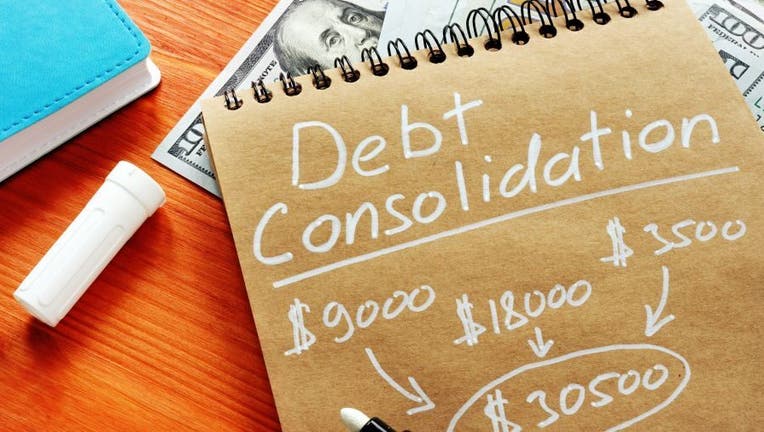This is how debt consolidation helps expedite your payoff goals

Despite the pandemic, Americans are working hard to pay down their debts. Here's how you can use that consolidation to get ahead of yours. (iStock)
Despite the financial upset of the coronavirus pandemic, Americans are taking charge of their debt and working to pay it down. According to a recent report by the credit bureau TransUnion, the average consumer credit card balance decreased from $5,893 to $5,369 between March and April of this year. In addition, the aggregate excess payment (AEP) on personal loans increased from $194 to $215 in the same time frame.
Notably, while these two types of debt cannot be refinanced in the same way that mortgage debt or student loan debt can, borrowers who are interested in working towards those financial goals still have a similar option. That option is known as debt consolidation. Below is your guide to the two most common debt consolidation methods.
What is debt consolidation?
Before getting into the specifics of your debt consolidation options, it's important to understand how debt consolidation works. Essentially, this practice involves taking multiple credit cards or loan balances and streamlining them into one. However, according to financial experts, taking this step can also make repaying your debts easier.
“Since you’re combining your debts into one loan, you will simplify your monthly bills into one payment,” explains Leslie H. Tayne, Esq., founder, and director of Tayne Law Group, P.C in New York NY. “This can help you manage your bills more effectively and help you avoid forgetting or missing payments.”
You can visit Credible to find the best loan rates and decide what debt it makes sense to pay.
HOW TO GET A $100,000 PERSONAL LOAN
How to consolidate your debt
Now that you're more familiar with what the process of debt consolidation involves, the next step is to learn how to make it work for you. With that in mind, the two most common methods for debt consolidation are listed below.
Taking out a debt consolidation loan
Your first option is to take out a debt consolidation loan. As the name suggests, you would use this type of personal loan to pay off all your existing balances and to consolidate your debt into one place. Debt consolidation loans typically come with a fixed interest rate, which means that you'll have the security of stable monthly payments and of knowing exactly when you’ll be able to pay off your debt in full.
As an added bonus, Tayne says that personal loans typically come with a lower interest rate than a credit card. This means that if you continue making the same size payments after you consolidate your debt, you should be able to pay down debt faster because a greater percentage of your payment will be going to your principal balance.
If you think that a loan like this might be the best choice for you, visit an online marketplace like Credible to get a sense of your debt consolidation loan options.
9 OF THE BEST DEBT CONSOLIDATION COMPANIES
Getting a balance transfer credit card
The other option is to open a balance transfer credit card. Similarly to a personal loan, a balance transfer card lets you transfer your existing credit card debt onto a single card. These cards usually also come with a 0% APR introductory offer, which means that you likely won't have to pay any interest on your outstanding debt for a set period of time.
However, keep in mind that a balance transfer card is also likely to come with a variable interest rate. If you don't pay off your balance in full by the end of the introductory 0% APR period, you could end up paying more in interest in the long run.
In addition, it's important to note that balance transfer cards are generally only available to those with an excellent credit score. You'll want to take your FICO score and credit history into account before you apply for one of these cards.
If you think you might be a good candidate for one, Credible can help you find the right balance transfer card for you.
PROS AND CONS OF BALANCE TRANSFER CREDIT CARDS
The bottom line
While you can refinance student loans and refinance mortgage debt, where personal loans and credit cards are concerned. the process works a bit differently. In that case, if you want to refinance debt as part of your personal finance goals, you should look into one of the above two methods for debt consolidation.
That said, according to Tayne, becoming and staying debt-free is also about changing your spending habits.
“To effectively maximize the benefits of consolidating your debt, it’s best to try to avoid adding onto your debt in other places,” she advises. “Consolidating your debt doesn’t prevent you from charging on other credit cards or taking out other loans, which can slow down your payoff progress.”
See what kind of personal loan rates you qualify for today to see if it makes sense for you.

